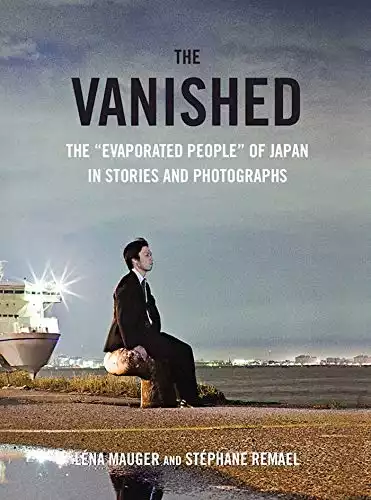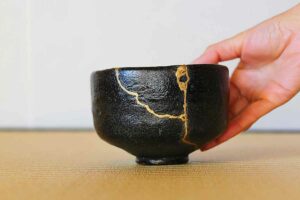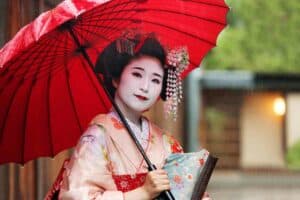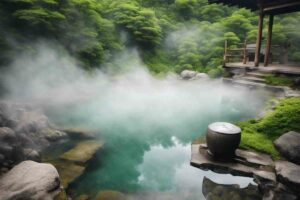In Japan, thousands of people decide to simply disappear from society.
These people known as Jouhatsu (蒸発) meaning ‘evaporated’, are from all walks of life and manage to lead an invisible untraceable existence in one of the most technologically advanced nations on Earth.

In this article, we’ll deep dive into one of Japan’s most unspeakable topics and learn about the lives of the evaporated people of Japan.
Table of Contents
What is Jouhatsu 蒸発?
Jouhatsu is a word that the Japanese have given to the phenomenon of people deliberately leaving their lives and identity and fleeing to live anonymously elsewhere.
The term, which means ‘evaporation’ in English came into use in the 1960s.
It describes a disappearance where someone disappears suddenly leaving absolutely no trace or telling anyone where they have gone – like steam rising from a kettle.
Unexplained disappearances are an unspoken part of Japanese culture
The word Jouhatsu is a valve that allows the Japanese to express something about an unspeakable issue in their culture.

For the people who remain after someone has walked away from their former life, there is a palpable shame and a potential loss of social standing.
Though the option of vanishing is known to be available in Japan, it is extremely taboo and not discussed by anyone involved.
Hundreds of thousands of people ‘evaporate’ in Japan each year
Between 70 and 100,000 people go missing in Japan every year.
Missing person cases are currently being opened at record-high rates.
Amongst the devastating cases of suicide, murder, accidents, and other incidences are a sizable proportion of people who are Jouhatsu and have deliberately escaped a circumstance, they have felt that they could no longer endure.
Why do some Japanese people evaporate?
Jouhatsu communities have been hidden in Japan for a very long time but recently, journalists and vloggers have started to penetrate their neighborhoods and speak to those who are willing to talk.
This clandestine community is now sharing its experiences with the world and here are some of the main reasons why Jouhatsu run away.
Debt
The sudden or chronic inability of individuals and families to service their debts is a major driver of the life of the Jouhatsu.

Bankruptcy is a very great shame and is known to drive people to suicide.
With up to 2 million Japanese citizens struggling with bad debts, interest rates of 50% or more, and a tragically high suicide rate, it is understandable that many people take the option to walk away.
Loss of employment
Job losses are a major source of shame as many people are essentially employed for life by a single company in Japan.
The loss of a job is often considered a personal failure and a source of family shame, even if it wasn’t the employee’s fault.
Work is such a massive part of the identity of the Japanese that in periods of major job losses like the 1989 and 2008 recessions, the number of Jouhatsu swelled.
Domestic abuse
Domestic violence drives women and children to run away from the family home.
There are special agencies that can assist women in escaping a violent or controlling spouse.
For a fee, these companies ensure that a woman cannot be found.
Runaway children are also drawn to Jouhatsu neighborhoods, but they can be easily lured into drugs and crime.
Marital discord
Divorce is another source of shame that can lead people to become Jouhatsu.
Rather than remain in an unhappy marriage, or face eye-watering divorce costs, a spouse may change their identity and flee to the shadow society of the Jouhatsu.
‘Hitting the nail that stands out!’
Japanese culture and society can be extremely conservative with intense pressure to conform and not show any sign of personal weakness or failure.
People who have adverse circumstances or are different in some way often struggle to keep up with expectations.
The way of Jouhatsu is seen as an alternative to suicide. For some people who want to live an alternative lifestyle, Jouhatsu may offer an opportunity to feel free.
Where do the Jouhatsu go?
This is an excellent question. Is there somewhere on Earth that you can survive with no ID, credit cards, or even the most tenuous connection to your former life? Amazingly in Japan, there is.
French journalist and author of The Vanished: The “Evaporated People” of Japan in Stories and Photographs” Léna Mauger spent 5 years researching the hidden communities of the Jouhatsu.
She found whole cities of people who were surviving in cities of the lost, that hadn’t even made it onto conventional streetmaps.
Mauger went to the Tokyo district of San’ya, which is known for its Jouhatsu residents.
Another slum area in Japan that has Jouhatsu is Kamagasaki in Osaka. San’ya slum is not recognized as an official municipality of Tokyo, making it a convenient escape for anyone who wants to evaporate.
It houses thousands of people who have a cash-in-hand existence that keeps them barely sustained in the squalid boarding houses of the neighborhood.
The main opportunities for work are provided by the Japanese mafia, the yakuza. Jobs often involve day laboring.
Wages are low, but everything is transaction free. Surprisingly, despite all the tech, most Japanese businesses take cash, meaning that Jouhatsu can scrape by on the essentials.
Escaping with the Yonige-ya
It is almost inconceivable, but in Japan, there is an industry dedicated to helping people evaporate. These businesses are called Yonge-ya, meaning fly-by-night shops.
These businesses offer a professional turn-key service that can help someone vanish without a trace for as little as a few thousand yen.

Experts in evaporation services can even set up dead-ends for a client, abandoning cars or redirecting mail to fake addresses.
People who get into this line of work include removals firms, debt advisors, and individuals who have had exposure to the Jouhatsu lifestyle at some point in their lives. All moves are made by a specialist team in the dead of night.
The private detectives who hunt the evaporated
Relatives who lose a loved one to evaporation endure great shame.
If a missing person cannot be found, dead or alive, those who are left behind are in limbo.
The shame of Jouhatsu is so great that many missing person cases go unreported.
Japan has private detective agencies and organizations that can assist families in tracing a missing person.
However, the process is difficult and expensive and many families end up giving up their search.
Learn more about Japan’s Johatsu in this powerful documentary
In this remarkable documentary from the South China Morning Post, journalists penetrated Osaka’s Jouhatsu community to hear the stories of some of the evaporated.
Despite impoverishment, isolation, and adversity, these people spoke about their former and present lives:
This second, must-watch documentary, by Channel News Asia, explores the experiences of Jouhatsu, the Yonge-ya, and the people that have been left behind:
Final thoughts
Japan’s Jouhatsu people are all real people with their own stories and lives they have left behind.
The poverty and invisibility of their indigent lifestyle have left them on the margins of society.
Despite the mysterious name and almost mythic infamy, people in Japan continue to choose evaporation to escape, although not always to a better life.
- Japanese Wedding Traditions (Venue, Dress & Food)
- Kintsugi: Perfectly Imperfect Ceramic Art (with 8 Examples)
- 5 Best Japanese Makeup Brushes for a Flawless Finish
- Maiko Vs Geisha Compared: What Are the Differences?
- Japanese String Instruments (9 Famous Ones)
- Best Onsen Destinations In Japan (10 Top Locations)











